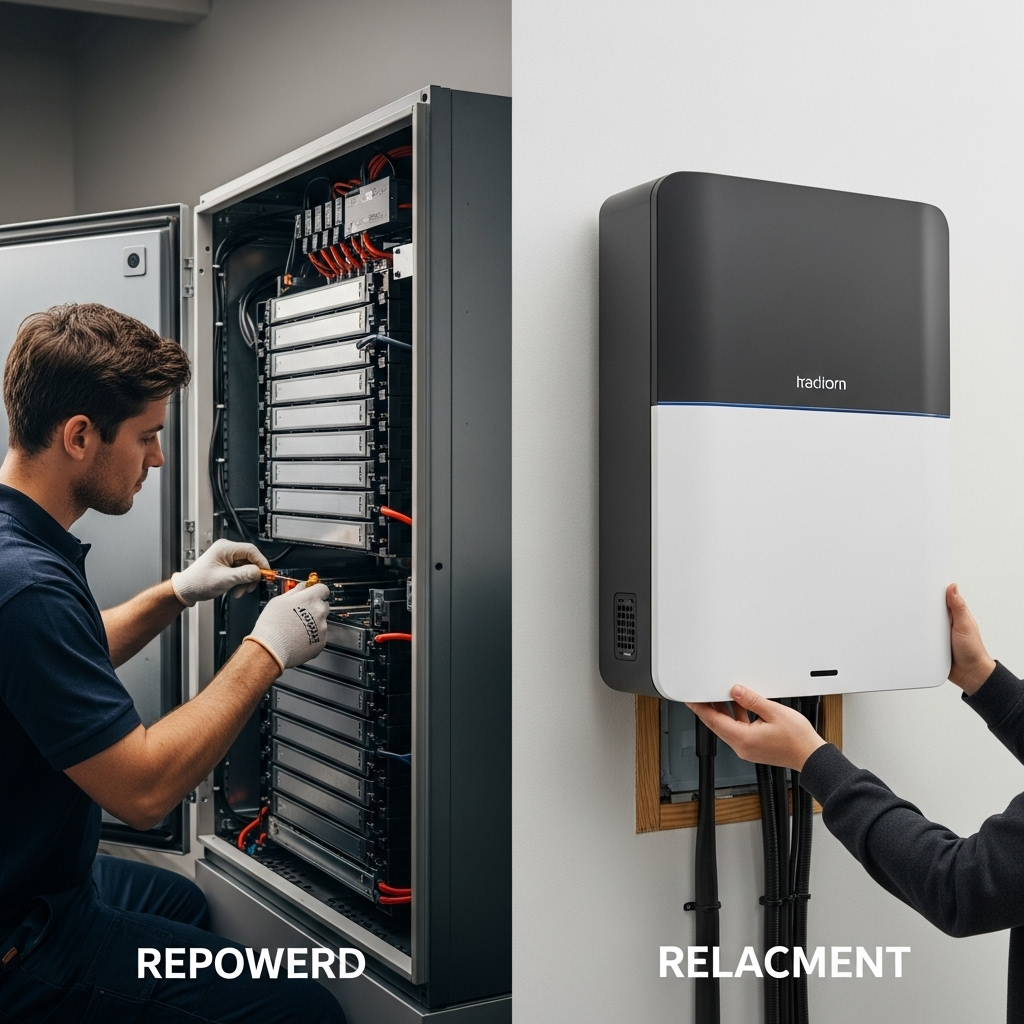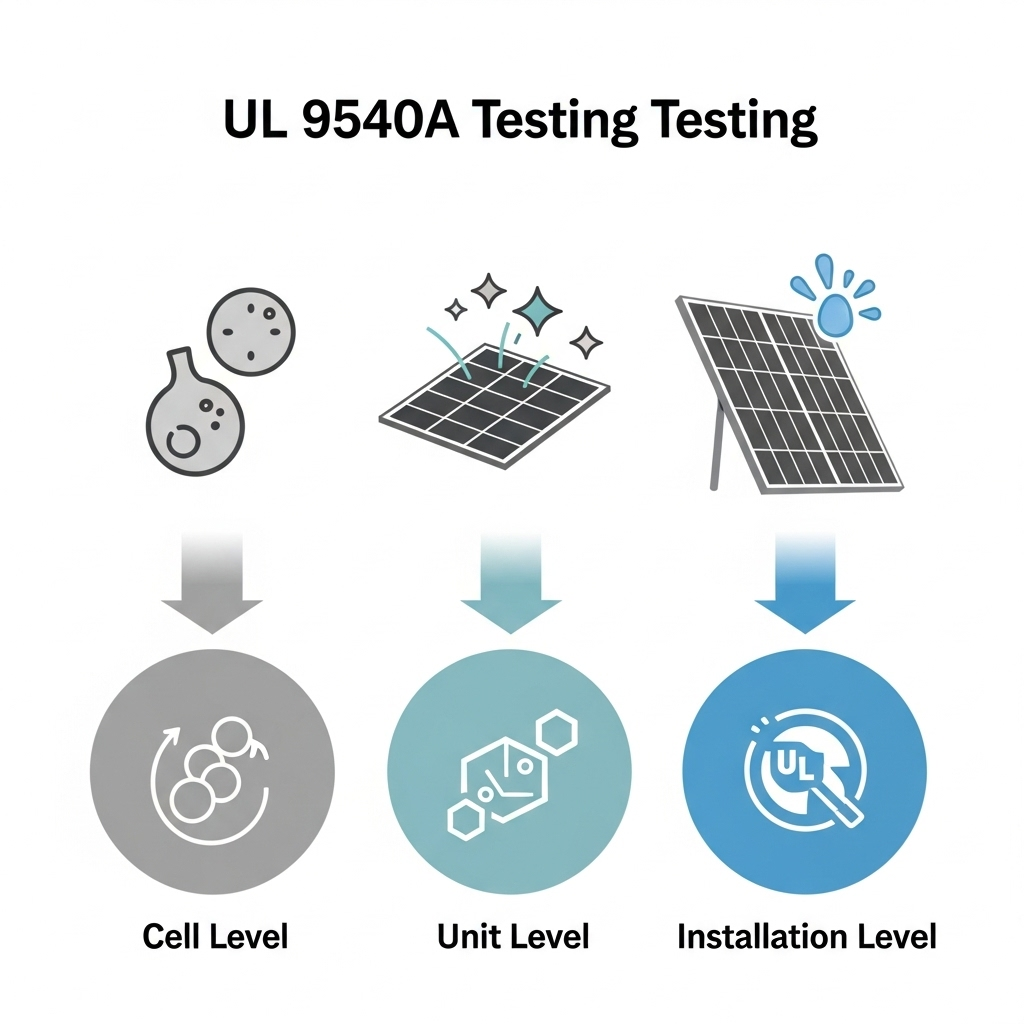Your home energy storage system has been a steadfast part of your energy independence, storing solar power for use at night or during an outage. But over time, you may notice it doesn't hold a charge as long as it used to. This decline in performance brings a critical question: should you opt for a full battery replacement or consider repowering the existing unit? This decision involves weighing costs, technology, and long-term value. Making the right choice ensures your home remains powered efficiently for years to come.
Understanding the Decline of a Home Battery
Like all batteries, the one in your home energy storage system degrades over time. This is a natural process, but understanding it helps you identify when action is needed. The two main indicators of aging are reduced capacity and lower efficiency.
What Happens as a Battery Ages?
As a battery cycles through charging and discharging, its internal chemistry changes. This leads to a gradual loss of its total energy storage capacity. A battery that once powered your home through the night might now only last a few hours. You may also see increased internal resistance, which means more energy is lost as heat during operation, reducing overall system efficiency. Your monitoring software might even display system alerts or fault codes related to cell imbalance or underperformance.
Key Factors Influencing Battery Lifespan
Several factors determine how quickly your battery degrades. The number of charge-discharge cycles is a primary driver. Additionally, the depth of discharge (DoD)—how much capacity you use before recharging—plays a significant role; shallower cycles are generally less stressful on the battery. Operating temperature is also critical, as extreme heat or cold can accelerate degradation. Finally, battery chemistry matters. Lithium Iron Phosphate (LiFePO4) batteries typically offer a longer cycle life and better thermal stability compared to other lithium-ion chemistries like Nickel Manganese Cobalt (NMC).
The Replacement Option: A Complete System Refresh
Choosing to replace your entire home battery unit is the most straightforward approach. It involves removing the old system and installing a brand-new one. This path offers a clean slate with the latest advancements in energy storage technology.
Benefits of a Full Replacement
A full replacement gives you access to the newest, most efficient battery technology on the market. Newer models often feature higher energy density, improved safety features, and more sophisticated software. You will also receive a new manufacturer's warranty, typically covering performance and defects for 10 years or more. This provides peace of mind and protects your investment. It's also an opportunity to resize your system. If your energy needs have grown, you can upgrade to a battery with a larger capacity.
Financial and Technological Considerations
The main drawback of replacement is the higher upfront cost. It is a significant investment, although prices for new systems have been trending downward. According to a report from the Renewable Power Generation Costs in 2024, batteries add significant value by shifting electricity to enhance grid reliability, a benefit you regain with a new, high-performing unit. A replacement might also necessitate upgrading other components, like your inverter, if the old one is not compatible with the new battery. This can add to the overall expense but also ensures your entire system is modern and optimized.
The Repowering Option: A Targeted Upgrade
Repowering is a more nuanced alternative. Instead of replacing the entire unit, this process involves swapping out only the degraded internal battery modules or cells while retaining the existing enclosure, Battery Management System (BMS), and inverter.
When is Repowering a Viable Choice?
Repowering is only possible for systems with a modular design. If your battery's internal components can be accessed and replaced individually, it may be a candidate. This approach is most successful when the manufacturer or a certified technician can supply compatible, high-quality replacement cells. The existing BMS must also be capable of managing the new cells effectively. An assessment by a qualified professional is crucial to determine if repowering is technically feasible for your specific system.
Evaluating the Pros and Cons
The primary advantage of repowering is its potential for lower costs, as you are only paying for the new cells and labor. It also generates less electronic waste, making it an environmentally friendlier option. However, there are downsides. The warranty on repowered units can be complex; it may only cover the new cells, not the entire system. There's also a risk of incompatibility between new cells and older components like the BMS, which could lead to suboptimal performance. As noted in the IEA's The Role of Critical Minerals in Clean Energy Transitions, older battery technologies can become obsolete, making recycling a more practical choice than repurposing or repairing.
Making the Right Decision for Your Home
The choice between replacing and repowering hinges on a careful evaluation of your system's condition, your budget, and your future energy goals. A methodical approach will help you determine the best long-term value.
Cost-Benefit Analysis
A direct comparison of costs is a good starting point. While repowering may have a lower initial price tag, a full replacement with a new warranty and higher efficiency might offer a better return over the next decade. Consider the total cost of ownership, not just the upfront expense.
| Factor | Full Replacement | Repowering |
|---|---|---|
| Upfront Cost | High | Moderate |
| Warranty | New, comprehensive system warranty (typically 10 years) | Limited warranty, often on new cells only |
| Technology | Access to the latest efficiency and safety features | Limited by existing system components (BMS, inverter) |
| Performance | Guaranteed performance at original specifications | Performance depends on cell quality and system integration |
| Environmental Impact | Higher waste (old unit must be recycled) | Lower waste (retains enclosure and electronics) |
System Compatibility and Future-Proofing
Think about your long-term plans. Do you anticipate adding an electric vehicle or more solar panels? A full replacement allows you to install a system that can scale with your future needs. It also ensures all components are designed to work together seamlessly. Understanding key performance metrics is vital for this analysis. For a comprehensive look at how metrics like C-rate, depth of discharge, and efficiency impact your system, the ultimate reference on solar storage performance provides valuable insights for making an informed decision. Some automakers have explored second-life applications for used batteries, as detailed in IRENA's Innovation Outlook: Smart charging for electric vehicles, but for many residential systems, technological and economic hurdles make replacement a more reliable path.
Your Next Step for a Resilient Home
Ultimately, whether you replace or repower your aging home battery depends on a unique combination of factors: the design of your current system, your budget, and your goals for future energy use. Repowering can be a cost-effective and sustainable choice for modular systems where compatible parts are available. Replacement, on the other hand, offers the security of a new warranty and the benefits of modern technology, providing a solid foundation for your home's energy future.
The most important step is to consult with a qualified solar and storage professional. They can perform a detailed assessment of your existing system, provide accurate cost estimates for both options, and help you navigate the technical complexities. A well-informed decision today will ensure your energy storage system continues to deliver reliable, clean power for many years.
Disclaimer: The information provided in this article is for educational purposes only and does not constitute financial or investment advice. You should consult with a qualified professional before making any decisions regarding your energy system.
Frequently Asked Questions
How much does it cost to replace a home battery?
The cost of replacing a home battery varies widely based on capacity (measured in kWh), brand, and chemistry (e.g., LiFePO4). Prices can range from several thousand to over ten thousand dollars, including installation. It is best to get quotes from certified installers for your specific needs.
Can I repower any home battery system?
No, not all systems can be repowered. This option is generally limited to batteries with a modular design that allows for the replacement of individual cell packs. Integrated, sealed units are typically not designed to be serviced in this way. A professional assessment is required to determine feasibility.
What happens to my old battery when I replace it?
Your old battery should be handled by a certified recycler. Installers will usually manage the removal and transport of the old unit to a facility that specializes in safely dismantling batteries and recovering valuable materials like lithium, cobalt, and copper for reuse in a circular economy.
Does repowering come with a new warranty?
Warranties for repowering can be tricky. Often, the manufacturer of the new cells will offer a warranty on those specific components, but it may not cover the entire system, including the original BMS or inverter. In contrast, a full replacement comes with a comprehensive warranty for the entire new unit.





Leave a comment
All comments are moderated before being published.
This site is protected by hCaptcha and the hCaptcha Privacy Policy and Terms of Service apply.